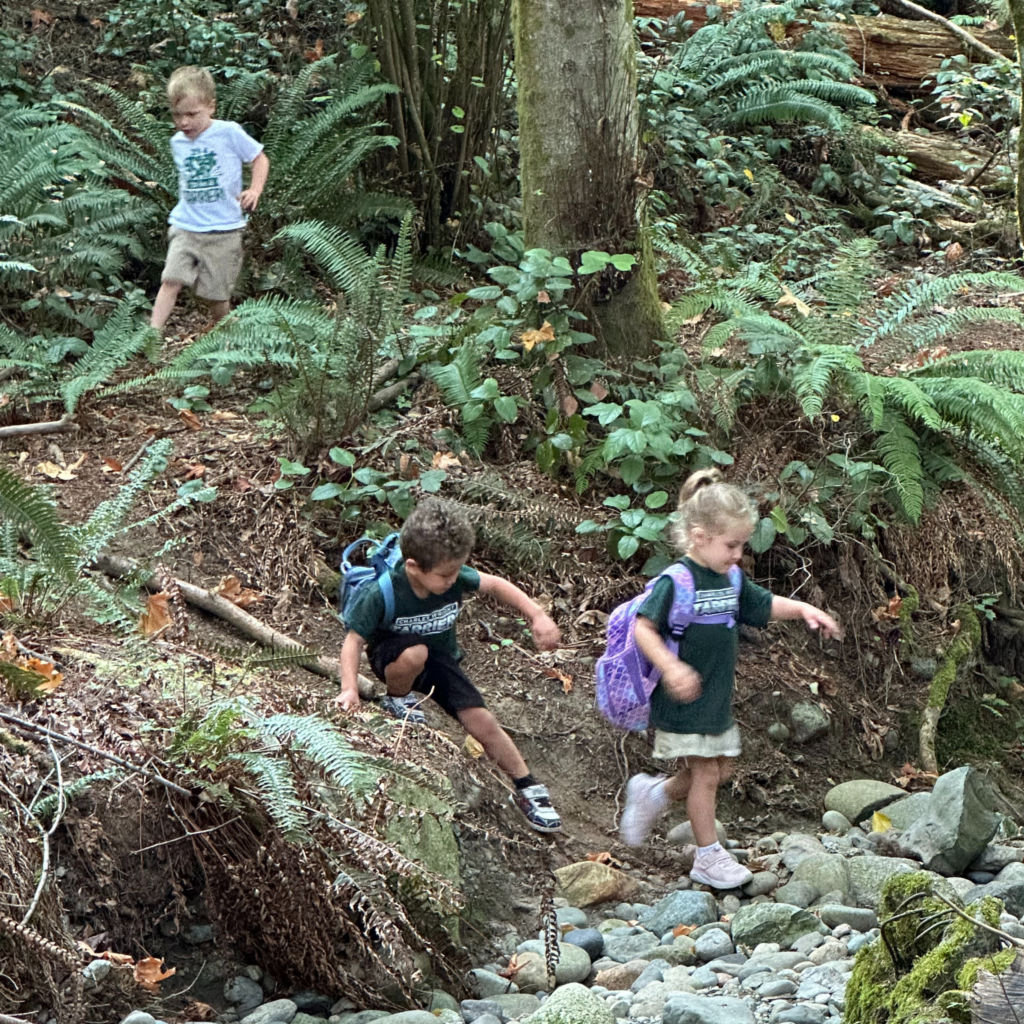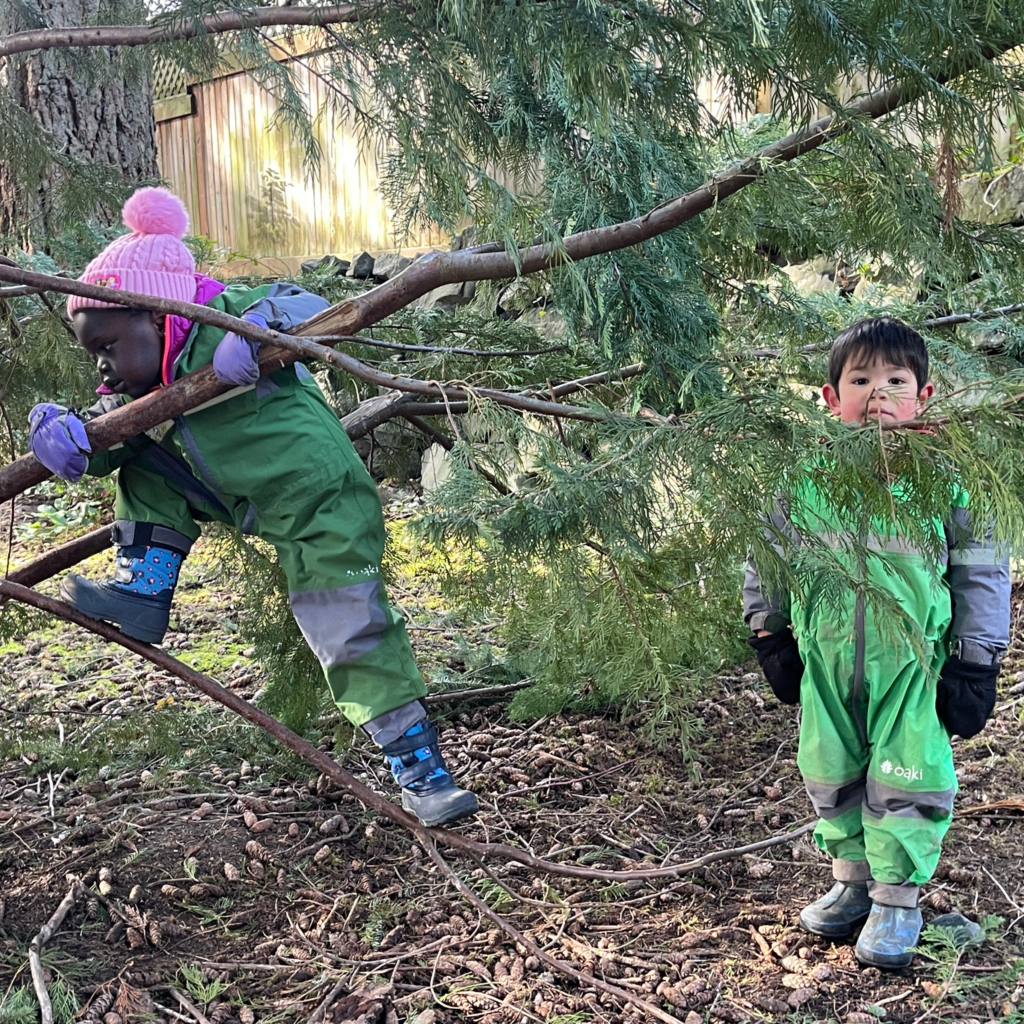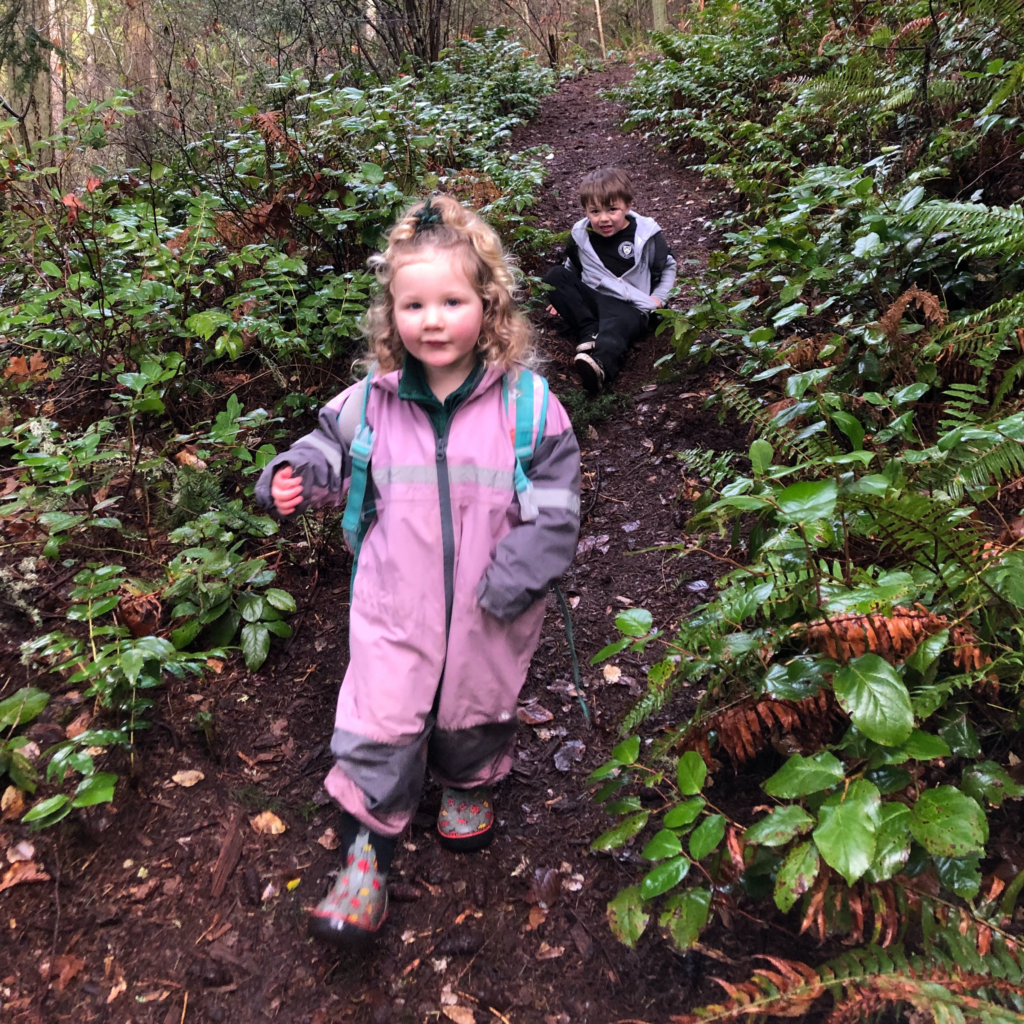The Forest: Playful Learning in Action
March 31, 2025
By Rixa Evershed, Beginning School Director


Three times a week, Beginning School children go to the forest. What happens when they are there? Why is this time so important to their learning journey? What do they experience in that time? We invite you to consider the following ideas and their impact on lifelong learning.
Risk – Risk presents the opportunity to engage in critical thought processes, like:
-
How do I keep my body safe?
-
What will I do next? What is the plan?
-
Do I feel safe?
-
Is this something I am capable of doing, or do I need more practice?
-
This feels scary. Can I still do it?
In a world that is hyper-focused on keeping children safe, we are actually in danger of making them more unsafe than their older counterparts. Children have a fundamental need to experience risky play. Our forest program offers low-stakes opportunities to explore risk and its rewards. Children can engage with our natural world in a way that gives them a plethora of opportunities to understand their own capability, build skills, and challenge themselves in ways they simply can’t in more designed spaces. We do not remove challenges or risks that children see and choose to undertake; we simply support their choice. We are risk-aware, not risk-averse, so children can readily assess the risks they encounter in the forest.


Sensorimotor, Strength, and Coordination
A fundamental piece of children’s development is facilitated by their opportunity to explore the natural world. Time in open-ended outdoor environments promotes healthy sensory and motor development in children. Our natural spaces allow children to experience the world with all of their senses at once, engaging the brain in a way few other things can.
This time in outdoor environments also directly contributes to children’s ability to sit in class and pay attention. Core strength, fine motor grip, posture, and stamina are just a few of the things that children need to successfully navigate a day in Beginning School or later, elementary classrooms. Long expanses of time, with ample space in our forest, give children the opportunity to build their proprioceptive and vestibular senses as well as large and small muscles. They also have the chance to experiment and gain mastery of their emotional selves by participating in collaborative play, problem-solving, and creating in community with others.
Connection to the Natural World
You can’t turn on the news without hearing about the mental health crisis that is afflicting our youth. More and more, the research is pointing to time spent in the outdoors as the antidote. We also recognize that it is fundamentally important that children feel a connection to the natural world, understanding that we are in community with the trees, creatures, flora, and fauna of our Charles Wright forest. In a recent blog post, Beginning School Lead Teacher, Kara Gjesdal, wrote about the children’s innate understanding that they were no longer in their world but in the world of the bees and blackberry bushes. These long stretches of time give children the ability to engage with rich, imaginative experiences and observe the miracles that nature offers, including numeracy and literacy. Nature is full of opportunities to engage with numeracy and literacy. If you are familiar with the Mandelbrot Sequence or fractals, then you know that they are everywhere in our outdoor world. We want children to feel a deep connection to their community, which includes our natural world and those who live there. These experiences intrinsically and holistically support the learning opportunities offered by the Portrait of a Tarrier.
Claire Warden, Educational and Experiential Learning consultant, shares these learning outcomes in a recent article:
-
Children become strong stakeholders in their own development.
-
Children show an increase in confidence and competence.
-
Children become independent and responsible for their own actions.
-
Children develop coping mechanisms, problem-solving capabilities, and transferable skills, which also increase their self-esteem and self-belief.
-
Children will develop a healthy respect for danger, hazards, and experimentation.
Sources for more information:
Balanced and Barefoot by Angela Hanscom
Last Child in the Woods by Richard Louv
What’s the Risk of No Risk by Deb Curtis
Risk It! By Claire Warden

